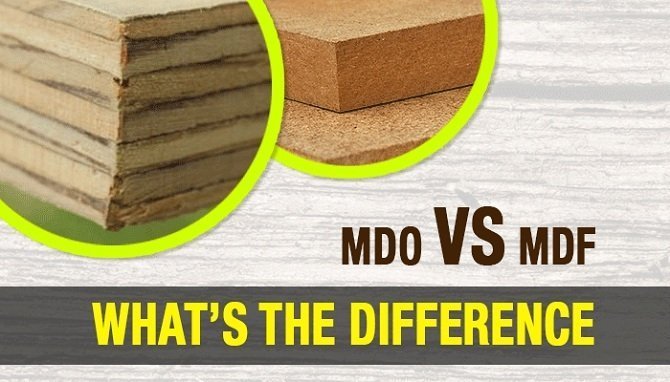MDO vs. MDF: Which is Better for You?

What are MDO & MDF?
MDO stands for medium density overlay. It is a special type of material that is made from pressed plywood and a layer of resin bonded over the surface with heat and pressure. MDO offers special benefits over other materials as it is:
- Weather-resistant – can withstand the elements for years before degradation.
- Smooth surface makes it perfect for paint to stick on and appear professional.
- Wear and tear durable – While not as solid as real wood panels, MDO can withstand friction and every day wear and tear better.
MDF stands for medium density fiberboard. As its name suggests, MDF is made from pressed wood waste that either comes from hardboard or soft board. It is mixed with a blend of water, wax, resin binder and pressed under high pressure and temperature.
The end result is a material that is much harder than plywood and just as cheap, if not cheaper.
Read More: Best Screws For MDF
MDO vs. MDF - What’s the Difference?
You often see professional woodworkers using MDO or MDF in their construction. They are both cheap and easily available materials that are easy to work with. But when do you choose one over the other?
Structural Support
MDF is generally used as countertops and placed in other places than requires a structural support. MDF is not as strong as its counterpart – MDO. If you build 2 pieces of furniture entirely with the same material, one with MDF and the other with MDO; MDO will always have a stronger structural integrity.
Wide and long sheets of MDF also needs structural support because the weight of the material will cause it to sink at the center of gravity. This usually happens when an MDF sheet is larger than 16 inches. This is not a problem with MDO.
Strength and Durability
MDF has a tensile strength of around 90 lbs over 4 x 8 inches sheet. MDO is much stronger than MDF and is generally used in construction that can support heavier weights. MDO also holds structural integrity better over time.
As far as durability is concerned, MDO offers far more durability than MDF.
Ease of Use
While both materials are fairly easy to work with, MDO offers a cleaner and better surface for tools. Cutting MDO is less messy and also takes on screws better than MDF.
Weight and Density
MDO is denser than MDF. MDO has a small MDF layer on it but it uses better engineering processes than results in a relatively denser and stronger material. MDO was originally made because MDF while offering great versatility, still had strength and weight issues.
MDF is heavier than MDO.
Application
While in most cases, one can be used over the other, professional carpenters generally prefer to use MDF for inside furniture and MDO for anything outdoors. MDO offers better weather resistance and can be easily treated with a layer of paint.
Weather Resistance
Since MDO has a layer of water-resistant resin pressed on the top and a smoother surface, it offers much superior weather resistance untreated than MDF. MDF is not recommended to be used in environments of high humidity or exposed to direct sunlight. Direct heat and UV light can quickly degrade the resin bond and the whole material can come apart after a few years.
However, both those materials are recommended to be treated – as in applying a layer of paint or translucent veneer for more protection.
Price
Since MDO uses more elaborate manufacturing processes, it is also more expensive than MDF. However, both those material are more affordable than regular hardwood.
>> Read More: What is Parawood?
Last Updated on October 30, 2018 by Tom Bradly
